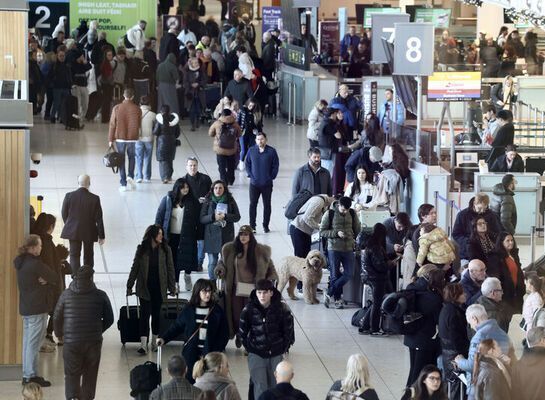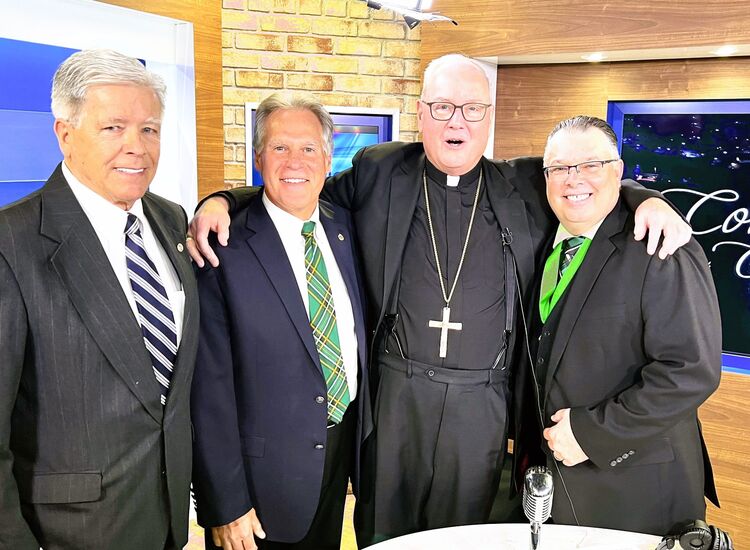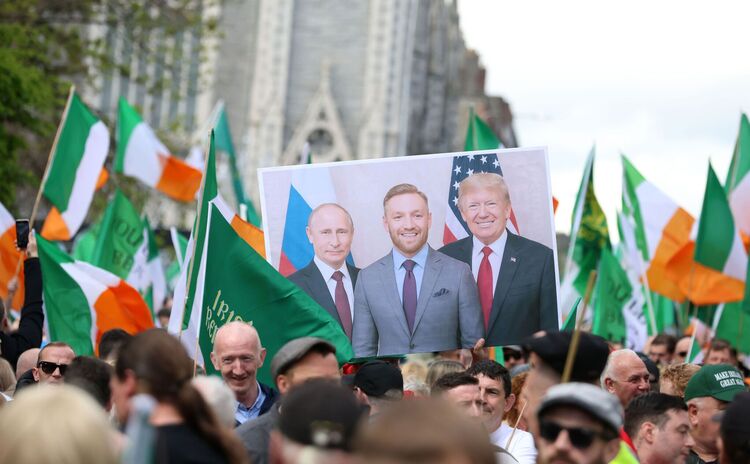[caption id="attachment_66613" align="aligncenter" width="600" caption="The shot seen 'round the world."]
The supreme courage displayed by firefighters, police, and other first responders to the terrorist attacks on the Twin Towers of lower Manhattan's World Trade Center on September 11, 2001, is as awe-inspiring now as it was then. The worst in human nature had elicited the best, as first responders acted selflessly and steadfastly in their duty that led to the ultimate sacrifice for many of them.
Another group of dedicated professionals also descended on the nightmarish site to do their jobs: photojournalists.
One of them was Thomas E. Franklin, then a 36-year-old staff photographer for The Record newspaper in Bergen County, N.J. At 5:01 p.m. EST, he took what is widely regarded as the single most memorable and enduring photograph from that catastrophe: three ash-spattered NYC firefighters, George Johnson, Dan McWilliams, and Billy Eisengrein, unobtrusively raising an American flag atop a pile of rubble near the corner of West and Liberty Streets. About an hour later, a heavily damaged Building Seven, Franklin's vantage point for much of that day, collapsed. Fortunately, he had left that spot before the building fell.
For the March 13-19, 2002, issue of the Irish Echo, I wrote two articles: "The Shot Seen 'Round the World" and "Music of Hope and Healing." The first described in detail how Tom Franklin managed to snap his iconic photo. The second recounted the personal 9/11 experiences of Irish-style flutist Linda Hickman, who resided in a Battery Park apartment building across from the Twin Towers, and folksinger Jack Hardy, whose younger brother Jeff, an executive chef in Cantor Fitzgerald's dining room on the 101st floor of the North Tower, perished with the skyscraper. Sadly, almost exactly a decade after my article appeared, Jack Hardy himself died from complications of cancer at age 63 on March 11, 2011.
The challenge for journalists was to describe the indescribable of 9/11 in prose, or to convey with a lens the utter devastation, reactive bravery, and embattled hope of that day. Tom Franklin achieved the latter in a single frame. "I never considered the photo to be lucky," he told me recently. "That day, I shot many photos of a murder scene of epic proportions, where thousands of innocent people died. My job and the job of every other photojournalist there was to make sure no one would ever forget. That's what it has always been about and always will be about--10 years, 20 years, 100 years from now."
Currently a multimedia editor and producer for The Record (print) and NorthJersey.com (web), two North Jersey Media Group publications, 45-year-old Tom Franklin acknowledged the ten-year impact of his photo. "Since it was first published, it has had a life of its own," he said. "I still receive phone calls, letters, and e-mails about it. The photo still resonates with people. That's very powerful, gratifying, and humbling."
Besides the myriad other media permitted to reproduce Franklin's photo (The Record holds controlling copyright), it was chosen to be on the "Heroes USA" postage stamp in 2002. So far, sales of that first-class stamp have generated more than $10 million through the Federal Emergency Management Agency (FEMA) for families affected by 9/11. "Taking a photo that has created so much good as this one has is special," added Franklin, who joined The Record in 1993 and still shoots photos on assignment at times.
On 9/11, photojournalists at Ground Zero were frequently at risk. David Handschuh, a photographer for the New York Daily News, was injured. Today he is active in arranging health screenings for photographers and first responders who were there. James Nachtwey, a well-known war photojournalist, admitted to Tom Franklin that he had narrowly escaped death that day. And Franklin wore just a thin paper mask over his nose and mouth as he snapped photos with his digital camera amid a swirl of gray dust. "My health is fine," he assured me. Nevertheless, a number of photojournalists are among the estimated 422,000 New Yorkers suffering from some form of post-traumatic stress disorder stemming from that day.
A lot has happened in journalism since 9/11. Sweeping layoffs, shrinking advertising and readership, and growing public distrust of media have combined to upend many newspapers. The Fourth Estate is, at minimum, unsettled. But Tom Franklin, who made the transition into video for his newspaper's Internet division in 2007, remains optimistic.
"We're all adapting," he said. "I still regard what I do now as photojournalism. The advent of web video has broadened the opportunities for telling stories. It's a different yet related type of storytelling, blending still pictures, moving pictures, and audio. We try to have as much synergy as possible. If a story that's running in print has a video component, we'll put a promo in the paper directing people to the video on NorthJersey.com."
Most of Franklin's videos are three minutes or less, although a couple times a year he will produce longer videos usually tied to special occasions, such as Election Day. For the past seven years he has also been involved in "Toxic Legacy," a documentary series by The Record about New Jersey's contaminated soil and water from improper or illegal dumping of waste and its deleterious effects on residents. In 2008, Franklin produced a video essentially recapping the story of his famous 9/11 photograph. And just last week, another video he produced, "Witness to History: The Photographers of 9/11," became available online. (Visit http://www.northjersey.com/specialreports/sept11/Witness_to_History_Photographers_of_911.h tml.)
Nearly 13 minutes long, the video "tells the story of 9/11 through the words and images of the photographers working that day," Franklin said. "It's one of the most in-depth pieces I've done. I interviewed a number of photographers as well as Frank Scandale, the executive editor of my newspaper, and David Friend, who wrote the book 'Watching the World Change: The Stories Behind the Images of 9/11.'"
I watched Tom Franklin's online video several times. It is still jolting to see the photograph taken by The Associated Press' Richard Drew of what has become known as "the falling man," plunging headfirst in midair toward the concrete from one of the smoldering Twin Towers. It is still ineffably moving to see the photograph taken by Reuters' Shannon Stapleton of the lifeless body of Father Mychal Judge being carried by five first responders. And it is still stunning to see Tom Franklin's unsurpassed photo of the three firefighters -- "the shot seen 'round the world."
Even tourists, armed with cameras, emerged as citizen photojournalists on 9/11. Carmen Taylor, an Arkansan visiting New York City, took some vivid photos of a jet hitting one of the Twin Towers that were widely reproduced. Her appreciation of professional photojournalists deepened that day. "They want to be the eyes of every person who's not there," she said in the interview Tom Franklin did with her for "Witness to History: The Photographers of 9/11."
Born in Queens, N.Y., raised in Huntington Station, Long Island, and living in Ramsey, N.J., Tom Franklin, who's Irish on his grandmother's side, will be part of the media covering the 10th anniversary ceremony at Ground Zero. He will be there to tell a story that cannot be told enough.








